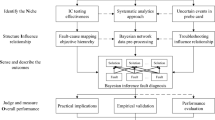Abstract
Quiescent Signal Analysis (QSA) is a novel electrical-test-based diagnostic technique that uses I DDQ measurements made at multiple chip supply pads as a means of locating shorting defects in the layout. The use of multiple supply pads reduces the adverse effects of leakage current by scaling the total leakage current over multiple measurements. In previous work, a resistance model for QSA was developed and demonstrated on a small circuit. In this paper, the weaknesses of the original QSA model are identified, in the context of a production power grid (PPG) and probe card model, and a new model is described. The new QSA algorithm is developed from the analysis of I DDQ contour plots. A “family” of hyperbola curves is shown to be a good fit to the contour curves. The parameters to the hyperbola equations are derived with the help of inserted calibration transistors. Simulation experiments are used to demonstrate the prediction accuracy of the method on a PPG.
Similar content being viewed by others
References
A.E. Gattiker and W. Maly, “Current Signatures,” in VTS, 1996, pp. 112-117.
C.L. Henderson and J.M. Soden, “Signature Analysis for IC Diagnosis and Failure Analysis,” in ITC, 1997, pp. 310-318.
P. Maxwell, P. O'Neill, R. Aitkin, R. Dudley, N. Jaarsma, M. Quach, and D. Wiseman, “Current Ratios: A Self-Scaling Technique for Production I DDQ Testing,” in ITC, 1999, pp. 738–746.
MOSIS at http://www.mosis.edu/Technical/Testdata/tsmc-025-prm.html.
S. Nassif and J. Kozhaya, “Fast Power Grid Simulation,” in DAC, 2000, pp. 156-161.
C. Patel and J. Plusquellic, “A Process and Technology-Tolerant I DDQ Method for IC Diagnosis,” in VTS, 2001, pp. 145-150.
C. Patel, E. Staroswiecki, D. Acharyya, S. Pawar, and J. Plusquellic, “ACurrent Ratio Model for Defect Diagnosis Using Quiescent Signal Analysis,” Workshop on Defect Based Testing, VTS, 2002.
C. Patel, E. Staroswiecki, D. Acharyya, S. Pawar, and J. Plusquellic, “Diagnosis using Quiescent Signal Analysis on a Commercial Power Grid,” Accepted for publication in International Symposium for Test and Failure Analysis, 2002.
J. Plusquellic, “IC Diagnosis Using Multiple Supply Pad I DDQs,” Design and Test, vol. 18, no. 1, pp. 50-61, 2001.
C. Thibeault, “On the Comparison of Delta I DDQ and I DDQ Test,” in VTS, 1999, pp. 143-150.
C. Thibeault and L. Boisvert, “Diagnosis Method Based on Delta I DDQ Probabilistic Signatures: Experimental Results,” in ITC, 1998, pp. 1019-1026.
T.W. Williams, R.H. Dennard, R. Kapur, M.R. Mercer, and W. Maly, “IDDQ Test: Sensitivity Analysis of Scaling,” in ITC, 1996, pp. 786-792.
Author information
Authors and Affiliations
Rights and permissions
About this article
Cite this article
Patel, C., Staroswiecki, E., Pawar, S. et al. Defect Diagnosis Using a Current Ratio Based Quiescent Signal Analysis Model for Commercial Power Grids. Journal of Electronic Testing 19, 611–623 (2003). https://doi.org/10.1023/A:1027466620872
Issue Date:
DOI: https://doi.org/10.1023/A:1027466620872




